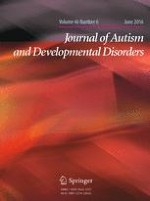25-02-2016 | Original Paper
Susceptibility to Optical Illusions Varies as a Function of the Autism-Spectrum Quotient but not in Ways Predicted by Local–Global Biases
Gepubliceerd in: Journal of Autism and Developmental Disorders | Uitgave 6/2016
Log in om toegang te krijgenAbstract
Individuals with autism spectrum disorder and those with autistic tendencies in non-clinical groups are thought to have a perceptual style privileging local details over global integration. We used 13 illusions to investigate this perceptual style in typically developing adults with various levels of autistic traits. Illusory susceptibility was entered into a principal-component analysis. Only one factor, consisting of the Shepard’s tabletops and Square-diamond illusions, was found to have reduced susceptibility as a function of autistic traits. Given that only two illusions were affected and that these illusions depend mostly on the processing of within-object relational properties, we conclude there is something distinct about autistic-like perceptual functioning but not in ways predicted by a preference of local over global elements.
